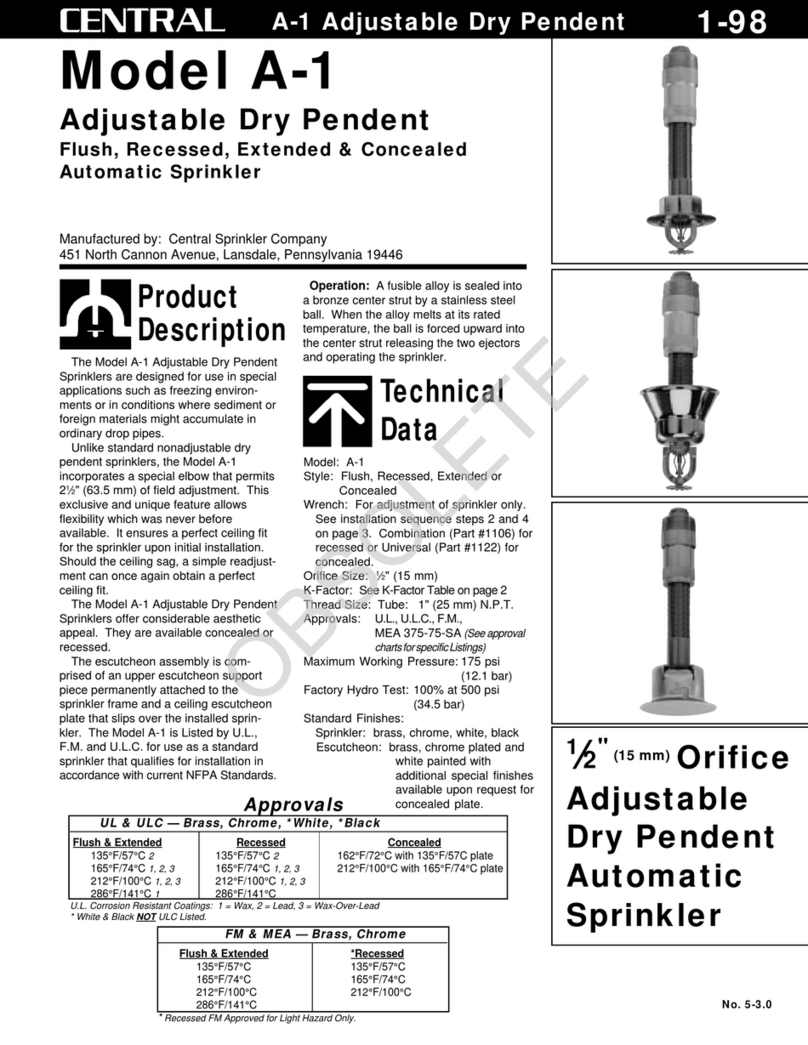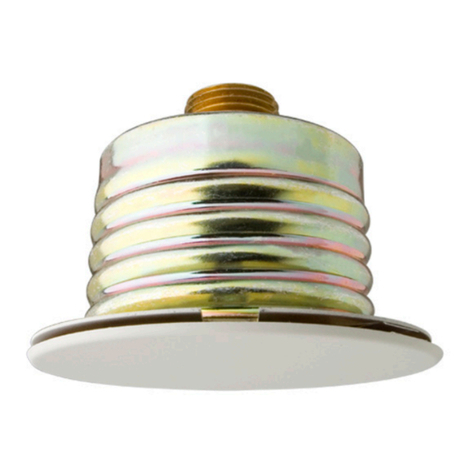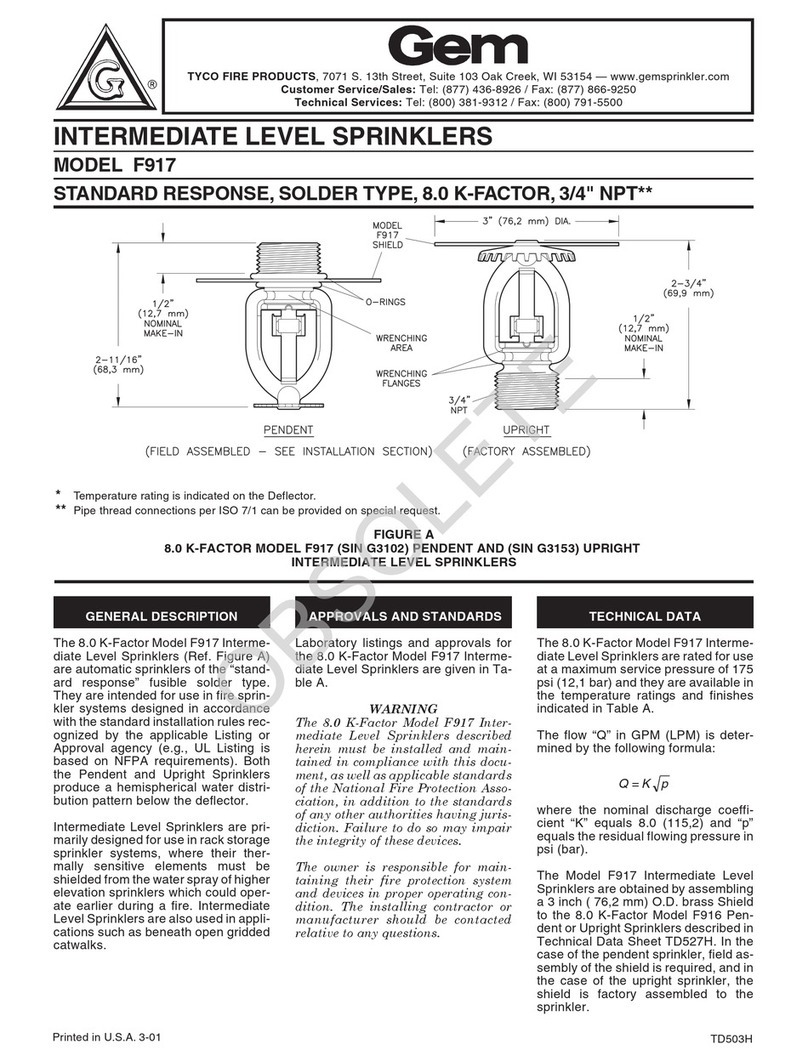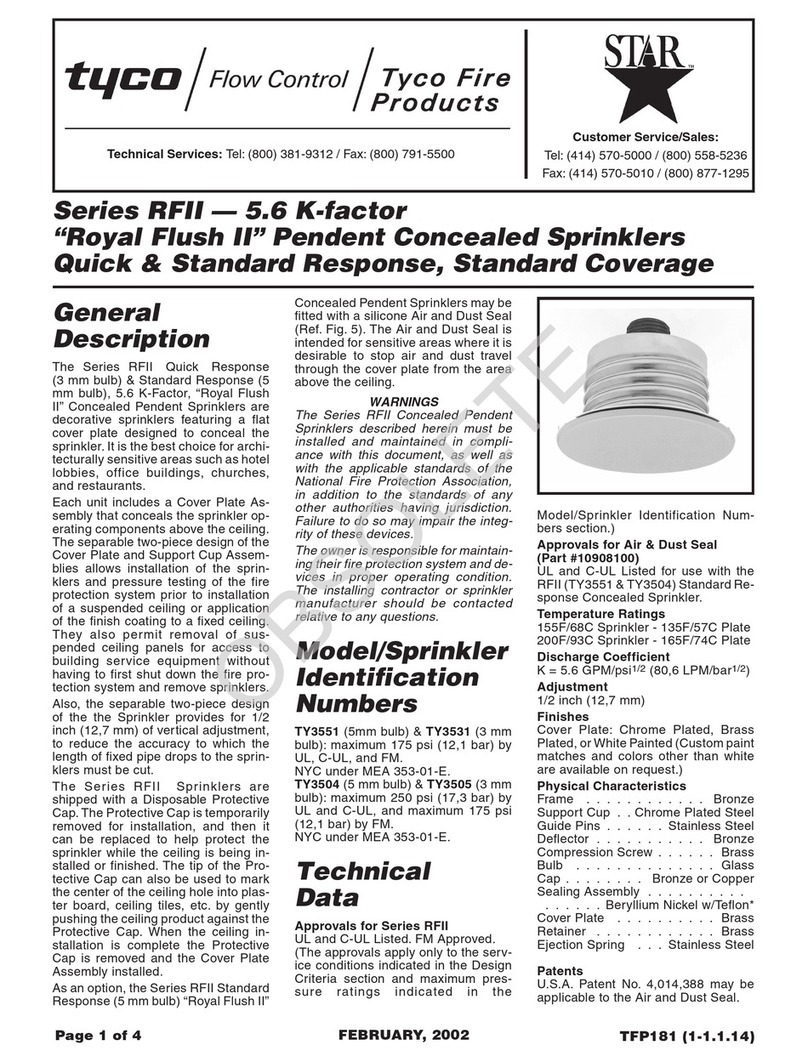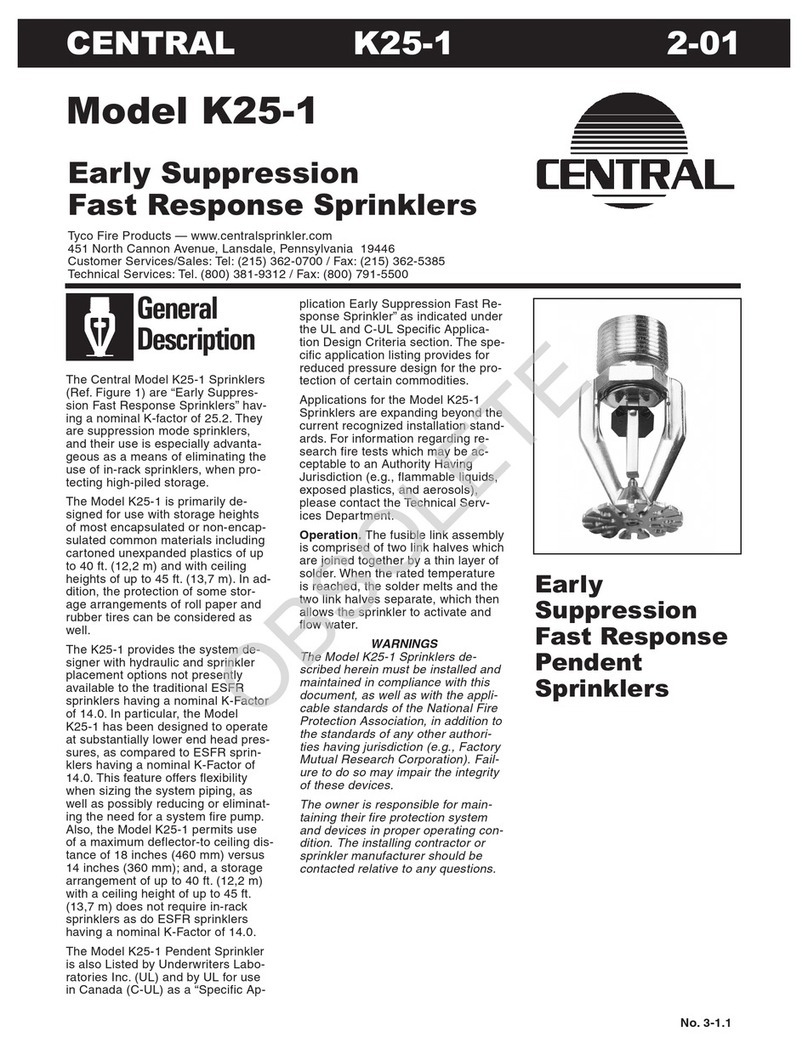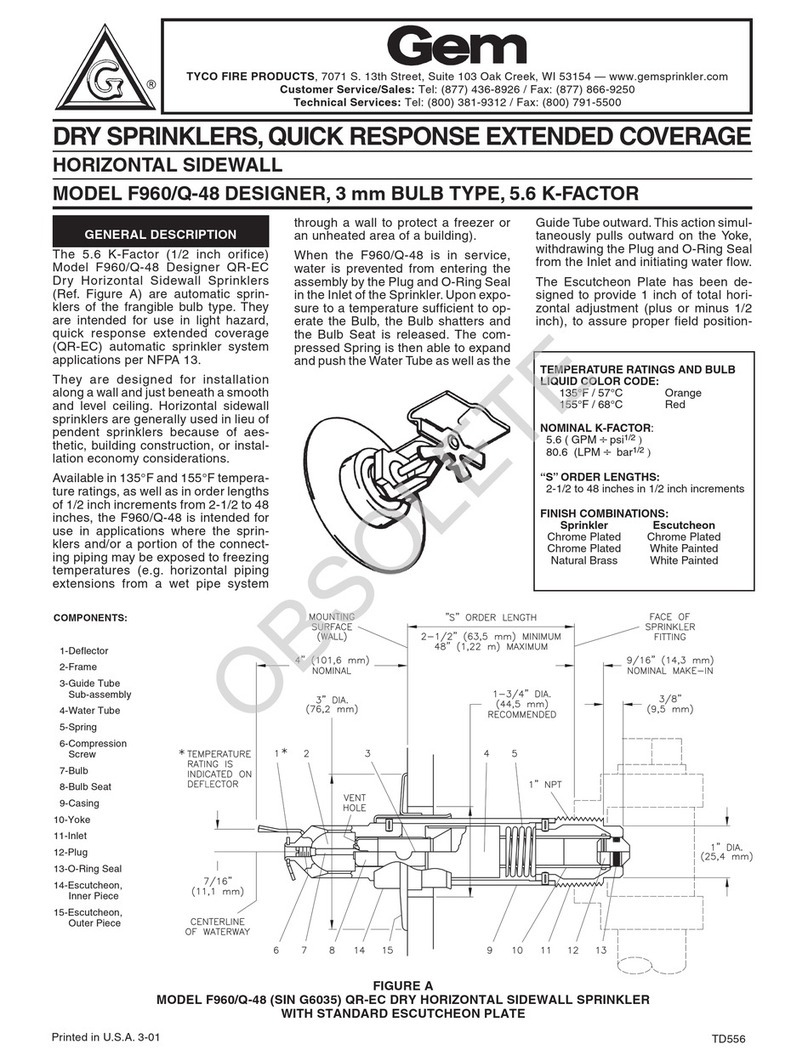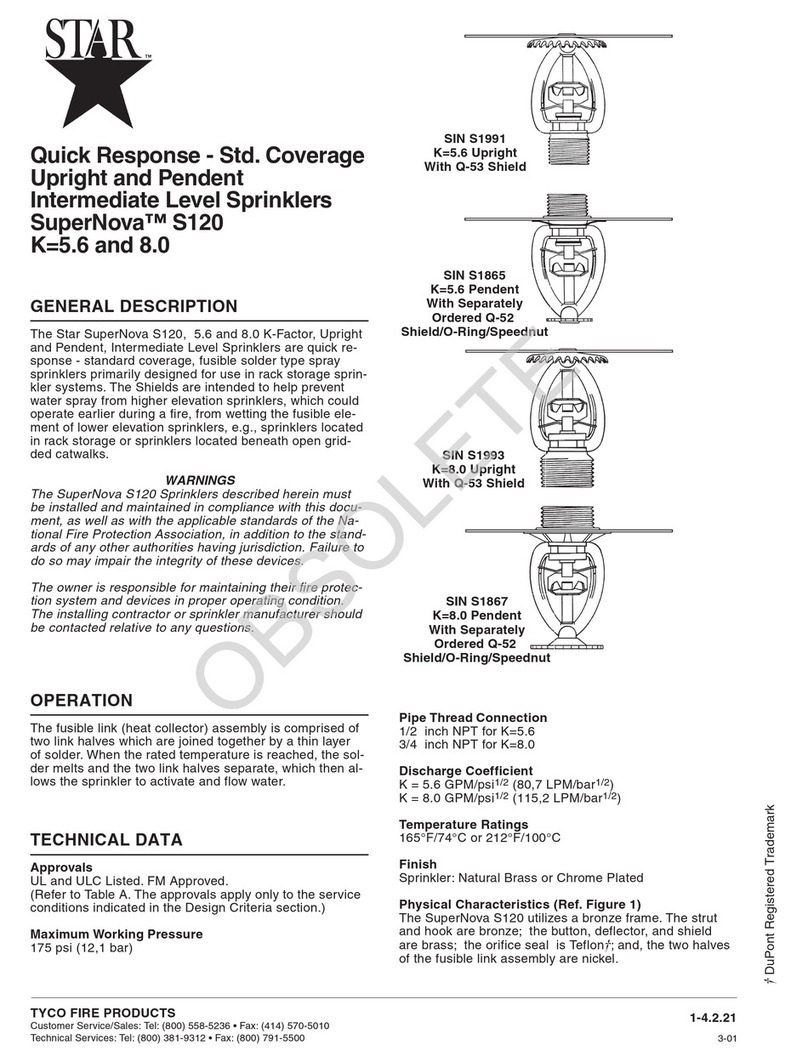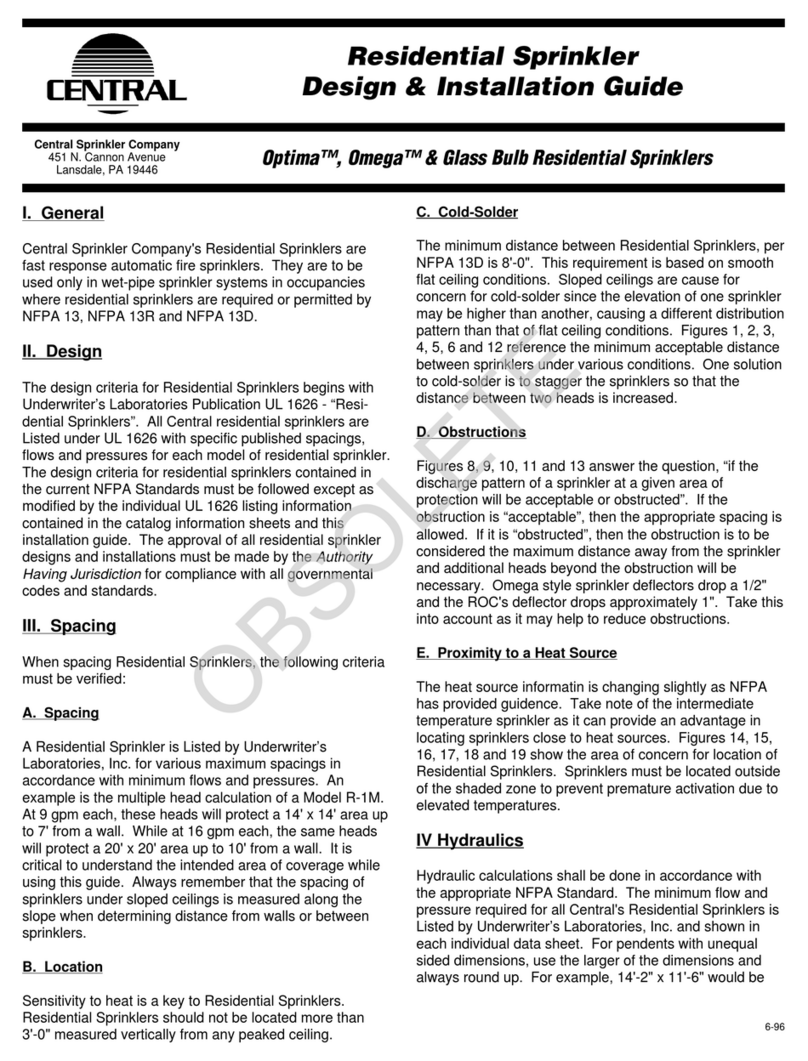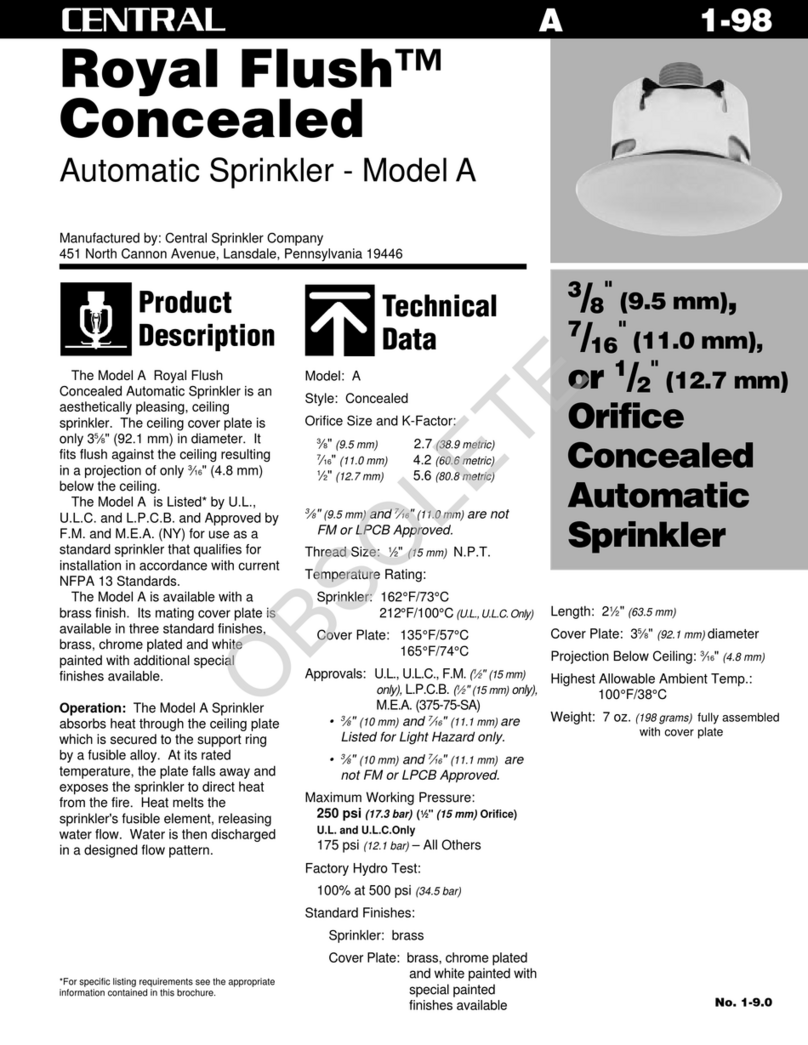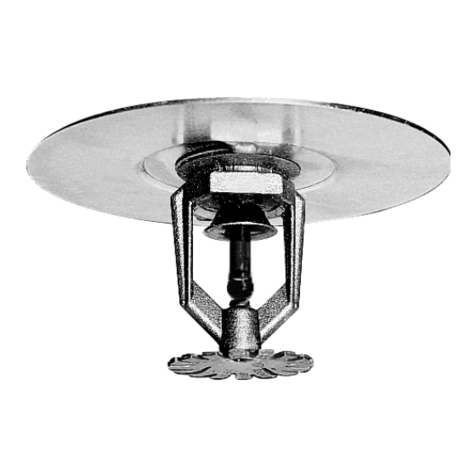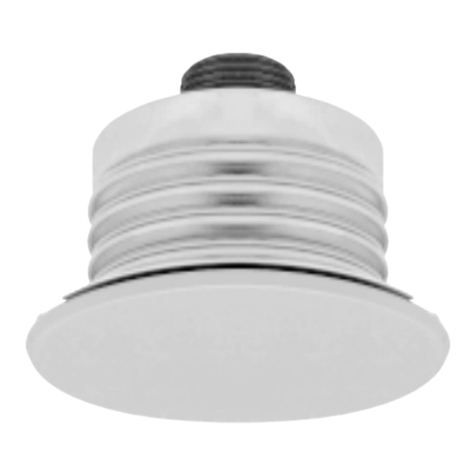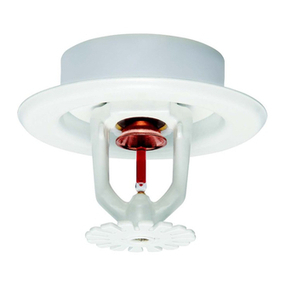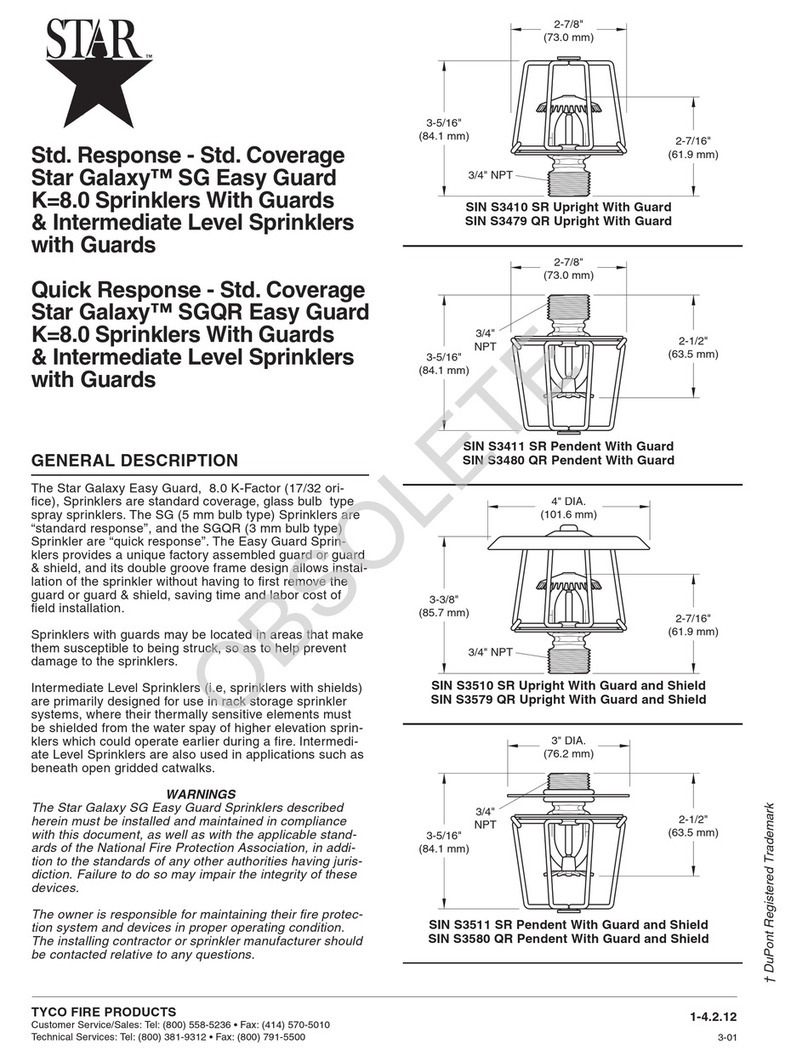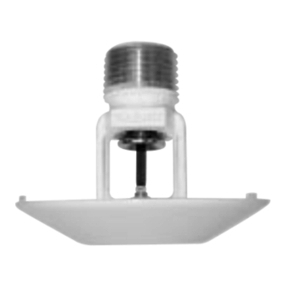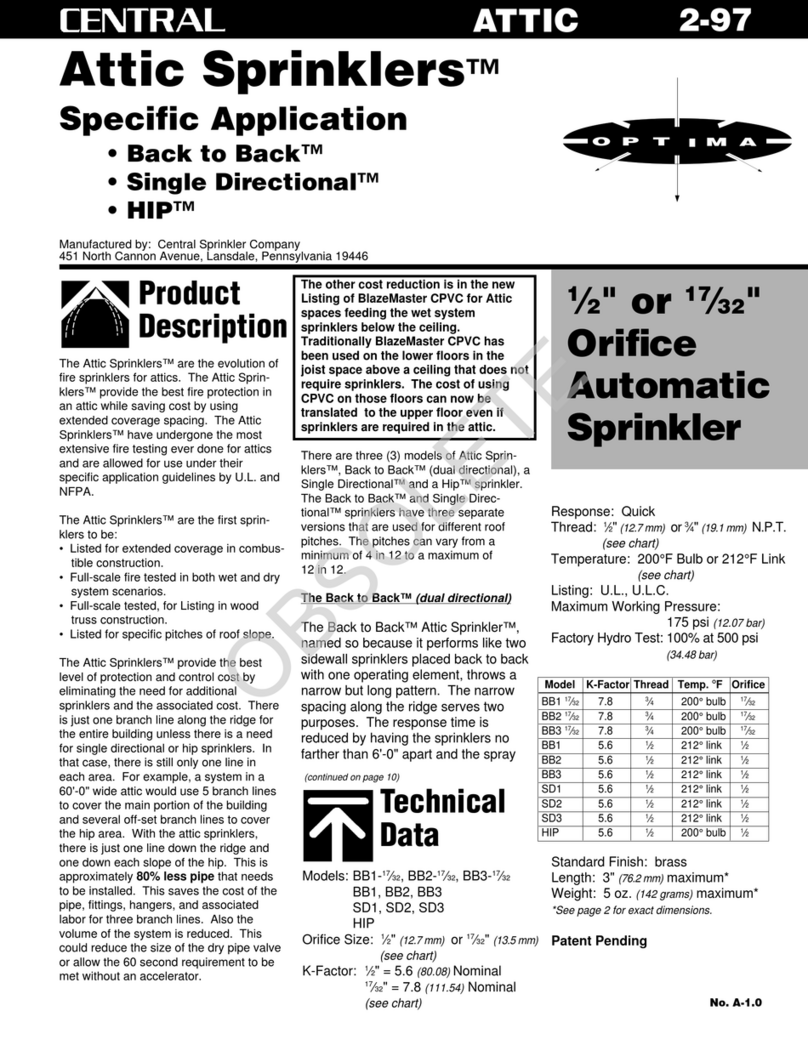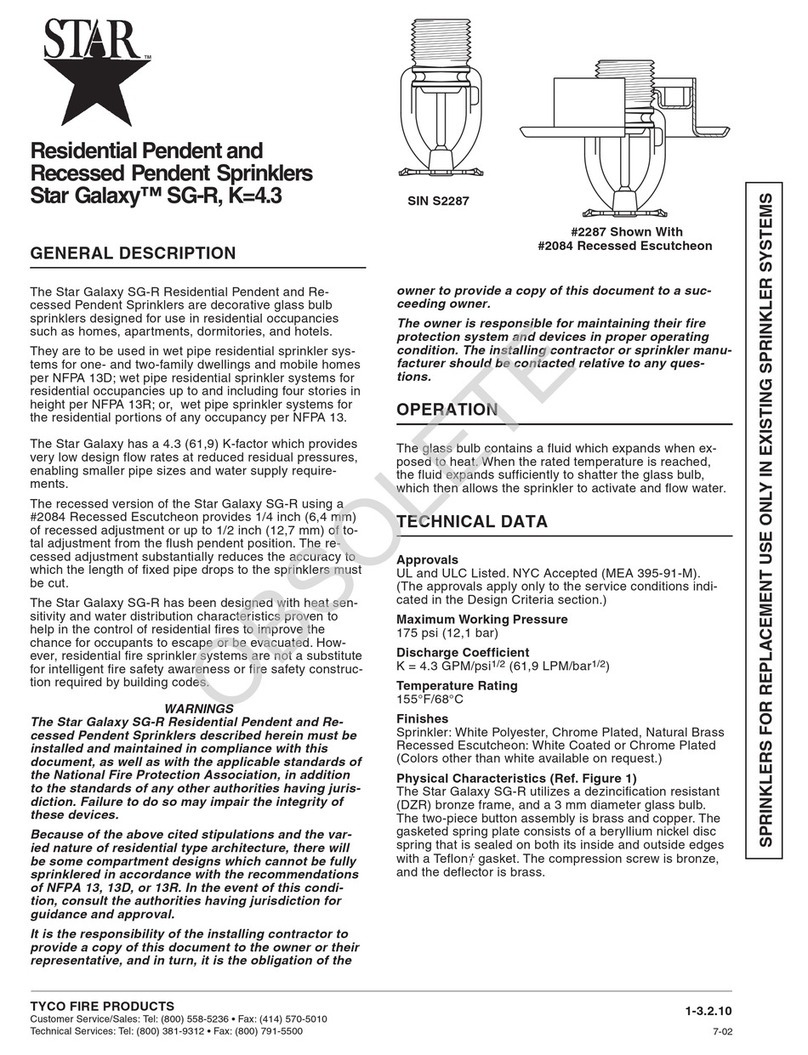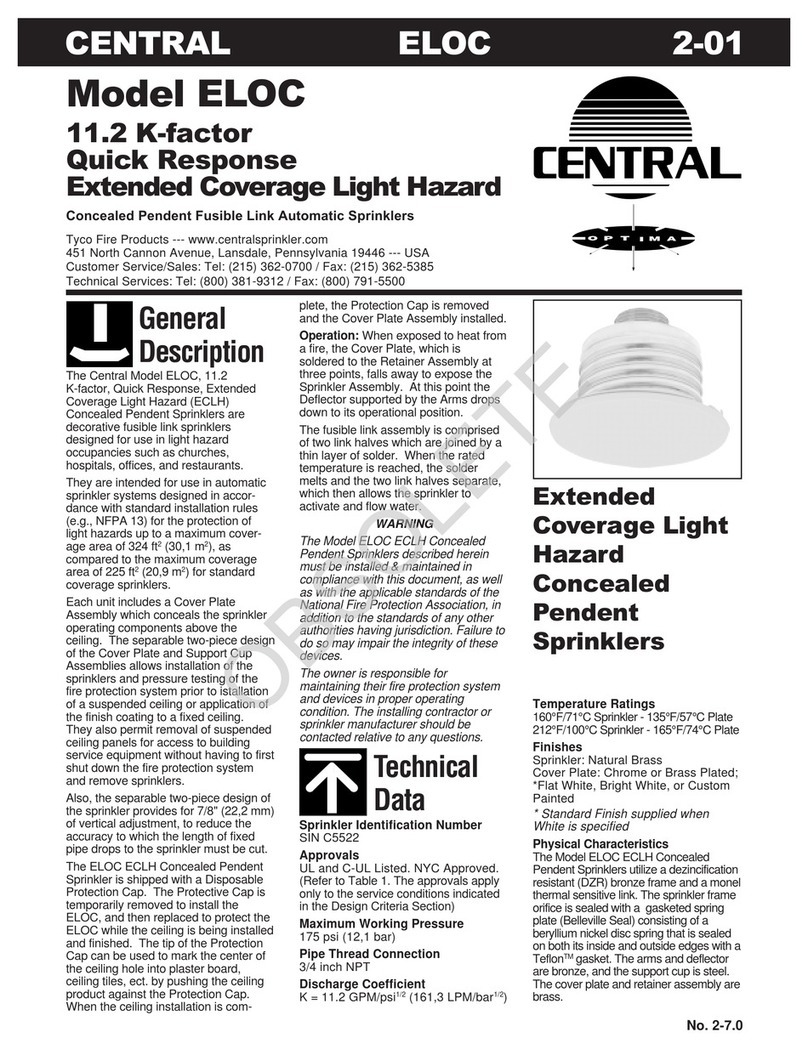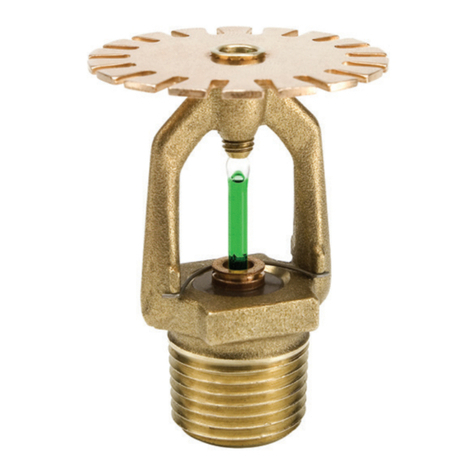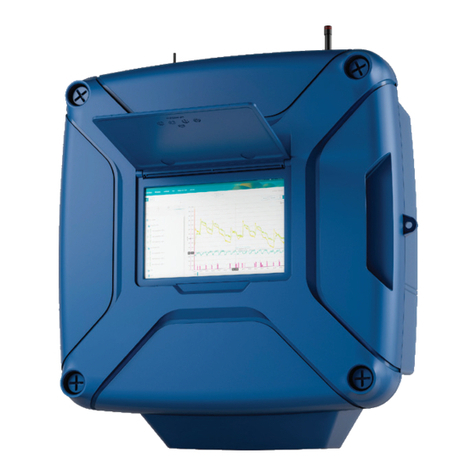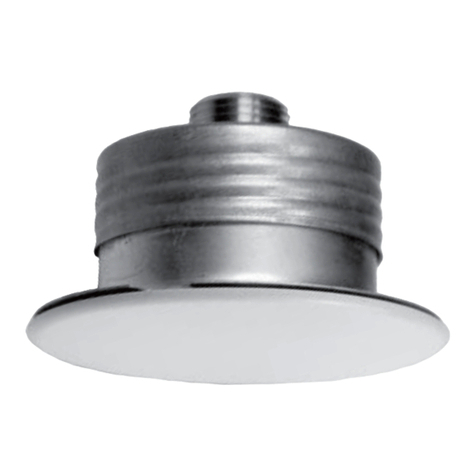
3
ensure that neither accumulate within
the sprinkler.
Special care must be taken when
installing with a copper system.
Sprinklers must be installed only after
the inside of the sprinkler drop and
associated fittings have been wire
brushed to remove any flux. Residual
flux can cause corrosion and in
extreme cases can impair proper
sprinkler operation.
Design Requirements—Standard Applications
The Model H-1 Dry Sidewall Sprinklers are intended for standard area
coverages and standard flow and pressure requirements as specified in
current NFPA 13 Standards for both ordinary and light hazard.
Design
Data
Installation
All Model H-1 Dry Sidewall Auto-
matic Sprinklers must be installed
according to current NFPA 13 Stan-
dards.
Dry sprinklers are designed to
prevent water from accumulating in
drops to sprinklers. To accomplish
this, they have a fitting that protrudes
into the branch line that allows the
plug to sit above the water line, if
there is any residual water, and
operate without the potential of
freezing.
Deviations from these require-
ments and standards or any alteration
to the sprinkler itself will void any
warranty made by Central Sprinkler
Company. In addition, installation
must also meet local government
provisions, codes and standards as
applicable.
For standard applications the
system piping may be hydraulically
calculated or pipe-scheduled. Check
for the proper model, style, orifice
size, and temperature rating prior to
installation. Install sprinklers after the
piping is in place to avoid mechanical
damage; replace any damaged units.
Wet pipe systems must be protected
from freezing.
Upon completion of the installation,
the system must be tested per
recognized standards.
In the event of a thread leak,
remove the unit, apply new pipe joint
compound or tape, and reinstall.
Installation Sequence
Step 1. The unit must be installed in
a sidewall position.
H-1 Sprinkler Wrench (Part #1090)
Step 2. The special cast iron fitting is
not attached to the sprinkler assem-
bly in the factory as this fitting must
be made into the sprinkler line fitting
first. Warning: Do not over-tighten
special cast iron fitting into the
branch line fitting or breakage will
result. The sprinkler assembly is
attached to the special cast iron fitting
by screwing the threaded connector
tightly. This is done by using a pipe
wrench on the threaded connector.
Never wrench on the sprinkler head
itself for tightening the threaded
connector into the special cast iron
fitting. The Model 1090 sprinkler
wrench may be used on the sprinkler
for adjustment purposes only (see
Step #4).
Step 3. Use only a non-hardening
pipe joint compound or Teflon* tape.
Apply only to the male threads.
*Teflon is a trademark of the DuPont Corp.
Step 4. Adjustment in length is
obtained by applying the sprinkler
head wrench and turning either
clockwise or counterclockwise. Note
that no locking is required when the
sprinkler is in its desired position.
Step 5. To install the escutcheon
plate, align it with and push it over the
sprinkler body and into the upper
support piece until the outer edge of
the escutcheon meets the mounting
surface.
Do not over- or under-tighten the
sprinkler to compensate for inaccu-
rate escutcheon plate adjustment.
Caution: Special care must be taken
when installing with a CPVC system.
Sprinklers must be installed after the
manufacturer's recommended setting
time for the primer and cement to
Care &
Maintenance
Sprinklers must be handled care-
fully. They must not be transported
or stored where ambient temperature
may exceed 100°F/38°C. For best
results, store them in a dry, cool
location in the original shipping
package.
Do not install sprinklers that have
been dropped or visibly damaged.
Sprinklers should never be painted,
coated, plated or altered in any other
way from manufactured condition or
they may not function properly. Any
sprinklers altered in such a manner
must be replaced.
The owner is responsible for the
proper operating condition of all fire
protection devices and accessories.
The NFPA standard 25 entitled,
“Inspection, Testing and Maintenance
of Water-Based Fire Protection
